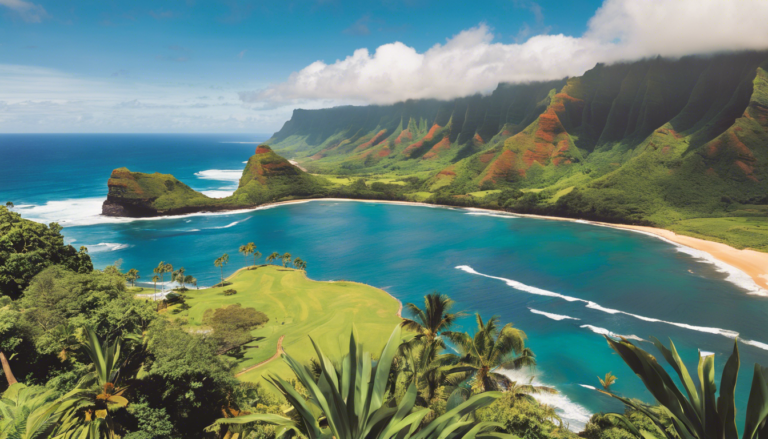Hawaii, often regarded as a tropical paradise, is renowned for its stunning landscapes, vibrant culture, and, most notably, its magnificent palm trees.
These iconic plants not only contribute to the islands’ breathtaking beauty but also offer various environmental and cultural benefits.
In this article, we delve into the allure of Hawaii palm trees and explore their aesthetic appeal, ecological importance, and cultural significance, along with essential tips for their care and maintenance.
Join us on a journey to discover why these swaying giants are much more than just a picturesque backdrop for your Hawaiian adventures.
Key Takeaways
- Hawaii palm trees enhance the landscape’s beauty, creating a picturesque tropical paradise.
- These trees provide ecological benefits, such as supporting local wildlife and improving air quality.
- Culturally, palm trees symbolize Hawaii’s identity and heritage, integrating into local traditions.
- Proper care and maintenance of Hawaii palm trees ensure their longevity and health.
- Visiting Hawaii offers an immersive experience with the island’s unique palm species and scenic views.
Introduction to Hawaii Palm Trees
Hawaii palm trees are not just a symbol of the tropical paradise that many travelers envision, but they also offer a rich blend of aesthetic, environmental, and cultural significance.
The sheer beauty of these elegant trees, with their towering trunks and lush fronds swaying gently in the island breeze, contributes greatly to the picturesque scenery that draws millions of visitors each year.
Beyond their visual appeal, Hawaii palm trees play a vital role in the local ecosystem by providing shade, reducing soil erosion, and serving as habitats for various species, thus promoting biodiversity.
Culturally, palms have deep roots in Hawaiian traditions, often represented in art and folklore, reflecting the indigenous people’s connection to the land and nature.
For those considering the integration of these trees into their own landscapes, understanding how to properly care for and maintain Hawaii palm trees is essential; it involves selecting the right species suited for the climate, ensuring adequate watering, and knowing the best practices for fertilization and pruning.
Embracing Hawaii palm trees not only enhances one’s surroundings but also fosters a deeper appreciation for the environmental and cultural heritage they embody.
The Aesthetic Appeal of Palm Trees in Hawaii
Hawaii palm trees, an iconic element of the islands’ tropical vistas, not only enhance the aesthetic allure of Hawaii’s landscapes but also serve multiple vital purposes.
Towering majestically against the backdrop of azure skies and vibrant sunsets, these palm trees evoke a sense of paradise that captivates travelers seeking natural beauty and serenity.
Beyond their visual impact, Hawaii palm trees contribute significantly to the local environment by providing shade, stabilizing soil, and supporting diverse ecosystems through their habitats for native wildlife.
They also hold cultural significance for native Hawaiians, often symbolizing peace, hospitality, and the island way of life.
For travelers looking to integrate these magnificent trees into their own spaces or gardens, understanding their maintenance is crucial; planting in well-draining soil, ensuring adequate water without over-saturation, and protecting against pests will promote the health and growth of these tropical giants.
Whether for a picturesque vacation backdrop or a deeper connection to Hawaiian culture, the beauty and benefits of Hawaii palm trees are undeniable.
‘In every outthrust headland, in every curving bay, in every grain of sand there is the story of the earth.’ – Rachel Carson
Environmental Benefits of Hawaii Palm Trees
Hawaii palm trees play a crucial role in maintaining the ecological balance of the islands, offering numerous environmental benefits that enrich both the landscape and biodiversity.
These majestic trees are not only iconic symbols of paradise but also serve as vital habitats for various species of wildlife, including native birds and insects.
By providing shade, they contribute to reducing soil erosion and forming a barrier against coastal winds, thereby preserving delicate ecosystems along shorelines.
Additionally, Hawaii palm trees actively participate in the carbon cycle; through photosynthesis, they absorb carbon dioxide while releasing oxygen, thus improving air quality for both humans and wildlife.
The presence of these palms also aids in maintaining local microclimates, essential for sustaining the rich variety of endemic plants that thrive in Hawaii’s unique environment.
For travelers seeking an immersive experience in nature, understanding the environmental significance of Hawaii palm trees enhances appreciation for the islands’ natural beauty and underscores the importance of conservation efforts during their visit.
Cultural Significance of Palm Trees in Hawaii
Palm trees in Hawaii are more than just stunning elements of the landscape; they hold deep cultural significance that dates back centuries.
Particularly revered in Hawaiian culture, these trees are seen as symbols of peace and hospitality, often embodying the spirit of ‘Aloha’ that is central to the island ethos.
Native species such as the Pritchardia, or Hawaiian fan palm, are particularly important, as they have been used historically by Hawaiians for thatching homes, crafting tools, and creating woven art.
For travelers, the sight of swaying hawaii palm trees evokes a sense of tranquility and paradise, serving as a reminder of the unique ecosystem and cultural heritage that Hawaii has to offer.
Additionally, these trees play a crucial role in the local eco-tourism industry, attracting visitors to stunning coastal views and providing shade in public parks and beaches, thus contributing to the overall allure of the islands.
Understanding their significance not only enhances the appreciation of Hawaii’s natural beauty but also fosters respect for the culture that cherishes these majestic trees.
How to Care for and Maintain Hawaii Palm Trees
Caring for Hawaii palm trees requires a blend of attentiveness and knowledge about the unique environmental conditions in the islands.
To ensure these majestic trees thrive, travelers interested in preserving the island’s natural beauty should focus on regular watering, especially during dry spells, as Hawaii’s varying microclimates can lead to different moisture needs.
It is essential to use well-draining soil to prevent root rot, a common issue caused by excessive moisture.
Fertilizing with a balanced palm fertilizer two to three times a year promotes vigorous growth and lush foliage, while careful pruning of dead fronds helps maintain aesthetics and health.
Additionally, travelers should be mindful of pests, such as the coconut rhinoceros beetle, by checking palm trees for signs of infestation and consulting local experts for effective control strategies.
By following these maintenance tips, you can contribute to the longevity and beauty of Hawaii’s iconic palm trees during your visit.
Frequently Asked Questions
What are Hawaii palm trees and where can they be found?
Hawaii palm trees are a variety of palm species that thrive in the Hawaiian climate.
They can be found throughout the islands, often in resort areas, public parks, and along beaches, enhancing the tropical aesthetic of the surroundings.
What are the benefits of having palm trees in Hawaii?
Hawaii palm trees offer numerous benefits including environmental advantages like providing shade, reducing soil erosion, and contributing to local biodiversity.
They also enhance the aesthetic appeal of the landscape, making Hawaii a more attractive destination for travelers.
What is the cultural significance of palm trees in Hawaiian culture?
Palm trees hold cultural significance in Hawaii, symbolizing beauty and tranquility.
They are often associated with Hawaiian traditions and are featured in art, music, and language, reflecting the islands’ natural beauty and heritage.
How can I care for and maintain palm trees if I have them in my garden?
To care for Hawaii palm trees, ensure they have well-draining soil, regular watering without over-watering, and periodic fertilization with appropriate nutrients.
Regular pruning and pest inspection are also essential to keep them healthy.
Are there specific palm tree species that are unique to Hawaii?
Yes, several palm tree species are unique to Hawaii, including the Hawaii fan palm (Pritchardia spp.) and the loulu palm, which are indigenous and play an important role in the ecosystem and cultural heritage of the islands.







